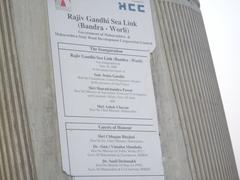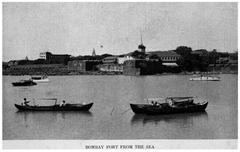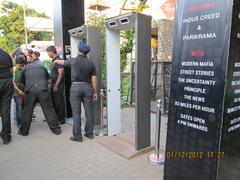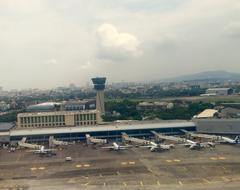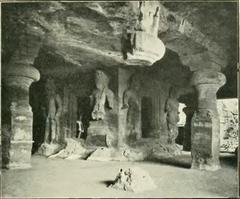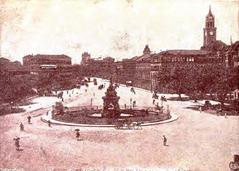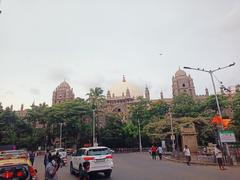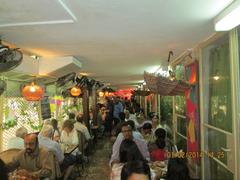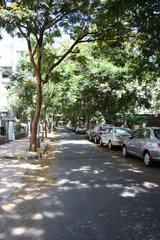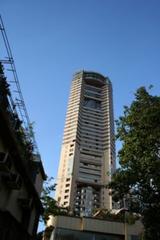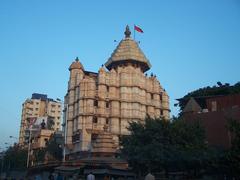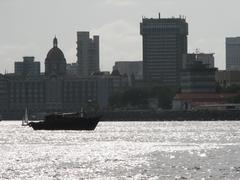Madh Fort: Visitor Information, Tickets, and History
Date: 23/07/2024
Introduction
Madh Fort, also known as Versova Fort, is one of Mumbai’s lesser-known historical landmarks, nestled in the northern suburbs of the bustling city. Constructed by the Portuguese in 1624, it served as a crucial coastal defense outpost, safeguarding their territories from the Marathas and other local rulers. Over the centuries, the fort has witnessed a tumultuous history, transitioning from Portuguese to Maratha control and finally to British hands before being largely abandoned in the 19th century. Today, Madh Fort stands as a testament to Mumbai’s rich historical tapestry, blending Portuguese, Maratha, and British architectural elements (source). Despite its historical significance, Madh Fort remains a hidden gem, often overshadowed by more prominent Mumbai attractions. Managed by the Indian Navy, the fort is not fully open to the public, requiring special permissions for visits. This guide aims to provide a comprehensive overview of Madh Fort, from its historical and cultural significance to practical visitor information, ensuring a memorable and informed visit for history enthusiasts and tourists alike (source).
Table of Contents
- Introduction
- Origins and Construction
- Portuguese Era
- Maratha Conquest
- British Acquisition
- Decline and Abandonment
- Post-Independence Era
- Cultural Significance
- Visitor Information
- Travel Tips
- Nearby Attractions
- Local Cuisine
- Safety Tips
- Accessibility
- Guided Tours
- Respect Local Culture
- FAQ
- Conclusion
Origins and Construction
Madh Fort, also known as Versova Fort, is a historical fortification located in the northern suburbs of Mumbai, India. The fort was constructed by the Portuguese in 1624 as part of their extensive network of coastal defenses. The strategic location of Madh Fort, overlooking the Arabian Sea, made it an ideal spot for monitoring maritime activities and safeguarding the coastline.
Portuguese Era
During the Portuguese era, Madh Fort played a crucial role in the defense and administration of the northern coastal regions of Mumbai. The fort was equipped with cannons and other artillery to fend off any naval attacks. It also served as a watchtower to monitor the movements of enemy ships and pirates. The Portuguese utilized the fort not only for military purposes but also as a base for their trading activities. The fort’s proximity to the sea facilitated the easy movement of goods and resources, contributing to the economic prosperity of the region.
Maratha Conquest
In the mid-18th century, the Marathas, under the leadership of Chimaji Appa, launched a series of campaigns to reclaim territories from the Portuguese. In 1739, the Marathas successfully captured Madh Fort after a fierce battle. The fort’s capture was part of a larger campaign that saw the Marathas reclaim several other forts and territories along the western coast of India. The Marathas made significant modifications to the fort’s structure, strengthening its defenses and adapting it to their military needs.
British Acquisition
The British East India Company, which had established its presence in Mumbai by the late 17th century, gradually expanded its control over the region. In 1774, the British acquired Madh Fort from the Marathas as part of a treaty. The fort was then integrated into the British defense network, serving as a coastal outpost to protect the burgeoning city of Bombay (now Mumbai). The British made further modifications to the fort, including the installation of additional artillery and the construction of barracks for soldiers.
Decline and Abandonment
With the advent of modern warfare and the development of new military technologies, the strategic importance of Madh Fort began to decline in the 19th century. The fort was gradually abandoned as a military outpost, and its structures fell into disrepair. By the early 20th century, Madh Fort had lost its significance as a defensive stronghold and was largely forgotten.
Post-Independence Era
After India gained independence in 1947, Madh Fort came under the jurisdiction of the Indian government. The fort remained in a state of neglect for several decades, with little attention given to its preservation. However, in recent years, there has been a renewed interest in the fort’s historical and cultural significance. Efforts have been made to restore and conserve the fort, making it accessible to the public as a heritage site.
Cultural Significance
Madh Fort holds a special place in the cultural and historical landscape of Mumbai. The fort’s architecture reflects the blend of Portuguese, Maratha, and British influences, showcasing the region’s rich and diverse history. The fort has also been featured in several Bollywood films, adding to its cultural prominence. Movies such as “Love Ke Liye Kuch Bhi Karega” and “Shootout at Wadala” have used the fort’s picturesque location as a backdrop, further popularizing it among tourists and film enthusiasts.
Visitor Information
Visiting Hours
Madh Fort is managed by the Indian Navy, and it is not fully open to the public. However, special permissions can be obtained for visits. The best time to visit is during the cooler months, from November to February, to avoid the sweltering heat of Mumbai’s summer.
Tickets
As the fort is not entirely open to the public, there are no regular ticket sales. Visitors must obtain special permissions from the Indian Navy for access. It is advisable to contact the Maharashtra Tourism Development Corporation (MTDC) for up-to-date information on how to arrange a visit.
Travel Tips
Best Time to Visit
The best time to visit Madh Fort is during the cooler months from November to February when the weather is pleasant. Avoid visiting during the monsoon season (June to September) due to heavy rains and slippery terrain.
Getting There
Madh Fort is located in the Madh Island area, approximately 30 kilometers from Mumbai’s city center. Visitors can take a ferry from Versova or Malad to reach Madh Island. From there, local transport options such as auto-rickshaws and taxis are available to reach the fort. For those preferring public transport, BEST buses also operate routes to Madh Island.
What to Wear
Visitors should wear comfortable clothing and sturdy footwear as the fort’s terrain can be uneven. Light, breathable fabrics are ideal for the warm climate. If visiting during the monsoon season, carry a raincoat or umbrella. Sunscreen, hats, and sunglasses are also advisable to protect against the sun.
Photography
Madh Fort offers stunning views of the Arabian Sea and the surrounding landscape, making it a great spot for photography. However, since the fort is under the jurisdiction of the Indian Navy, photography restrictions may apply. It is best to inquire about the rules regarding photography upon arrival to avoid any issues.
Nearby Attractions
While visiting Madh Fort, you can also explore other attractions in the vicinity:
- Erangal Beach - Located nearby, this beach is less crowded than other Mumbai beaches and offers a serene environment for relaxation.
- Aksa Beach - Another popular beach close to Madh Fort, known for its clean sands and beautiful sunsets.
- St. Bonaventure Church - A historic church dating back to the 16th century, located in Madh Island.
Local Cuisine
Madh Island is famous for its seafood. Numerous local eateries and shacks offer fresh and delicious seafood dishes. Some popular items to try include fish curry, prawn fry, and crab masala. For a more upscale dining experience, you can visit resorts and restaurants in the area that serve a variety of cuisines.
Safety Tips
- Stay Hydrated - Carry sufficient water, especially during the hotter months, to stay hydrated.
- Follow Guidelines - Adhere to any guidelines or instructions provided by the authorities, especially since the fort is under naval control.
- Avoid Isolated Areas - While exploring, stick to well-trodden paths and avoid venturing into isolated areas for safety reasons.
- Emergency Contacts - Keep a list of emergency contacts handy, including local police and medical services.
Accessibility
Madh Fort is not very accessible for visitors with mobility issues due to its uneven terrain and lack of modern facilities. However, efforts are being made to improve accessibility. It is advisable to check with local authorities or tour operators for the latest information on accessibility options.
Guided Tours
For a more informative experience, consider hiring a local guide who can provide insights into the history and significance of Madh Fort. Guided tours can be arranged through local tour operators or online platforms. These tours often include visits to nearby attractions and provide a comprehensive understanding of the area’s cultural heritage.
Respect Local Culture
While visiting Madh Fort and the surrounding areas, it is important to respect local customs and traditions. Dress modestly, especially when visiting religious sites like St. Bonaventure Church. Be mindful of local residents and their privacy, and avoid littering to help preserve the natural beauty of the area.
FAQ
Q - What are the visiting hours for Madh Fort?
A - Madh Fort is not fully open to the public, but special permissions for visits can be obtained from the Indian Navy. The best time to visit is from November to February.
Q - How can I obtain tickets for Madh Fort?
A - There are no regular ticket sales as the fort is managed by the Indian Navy. Visitors must obtain special permissions from the Indian Navy. Contact the Maharashtra Tourism Development Corporation for more information.
Q - Are there guided tours available at Madh Fort?
A - Guided tours are not regularly available. However, special permissions from the Indian Navy may include a guided tour.
Q - Is Madh Fort accessible for disabled visitors?
A - While the fort is accessible by road and has ample parking, the internal structure may pose challenges for disabled visitors due to steep and uneven pathways.
Conclusion
Madh Fort stands as a testament to Mumbai’s rich historical heritage, reflecting the city’s evolution through various colonial and indigenous influences. While the fort may not be as well-known as other historical landmarks in Mumbai, its unique history and cultural significance make it a must-visit for history enthusiasts and tourists alike. Efforts to preserve and promote Madh Fort will ensure that future generations can continue to appreciate and learn from this historical gem. For more updates and detailed information on visiting Madh Fort and other historical sites in Mumbai, consider downloading the Audiala mobile app or following related posts on social media (source).
References
- Madh Fort - Visiting Hours, Tickets, History, and Travel Tips for Mumbai’s Hidden Gem, 2024, Maharashtra Tourism Development Corporation https://www.maharashtratourism.gov.in/
- Madh Fort - Visiting Hours, Tickets, and Historical Significance in Mumbai, 2024, Maharashtra Tourism Development Corporation https://www.maharashtratourism.gov.in/destination/mumbai
- Essential Visitor Tips for Exploring Madh Fort, Mumbai - Hours, Tickets, and More, 2024, Maharashtra Tourism Development Corporation https://www.bestundertaking.com/
- Indian Navy, 2024, Indian Navy https://www.indiannavy.nic.in/
